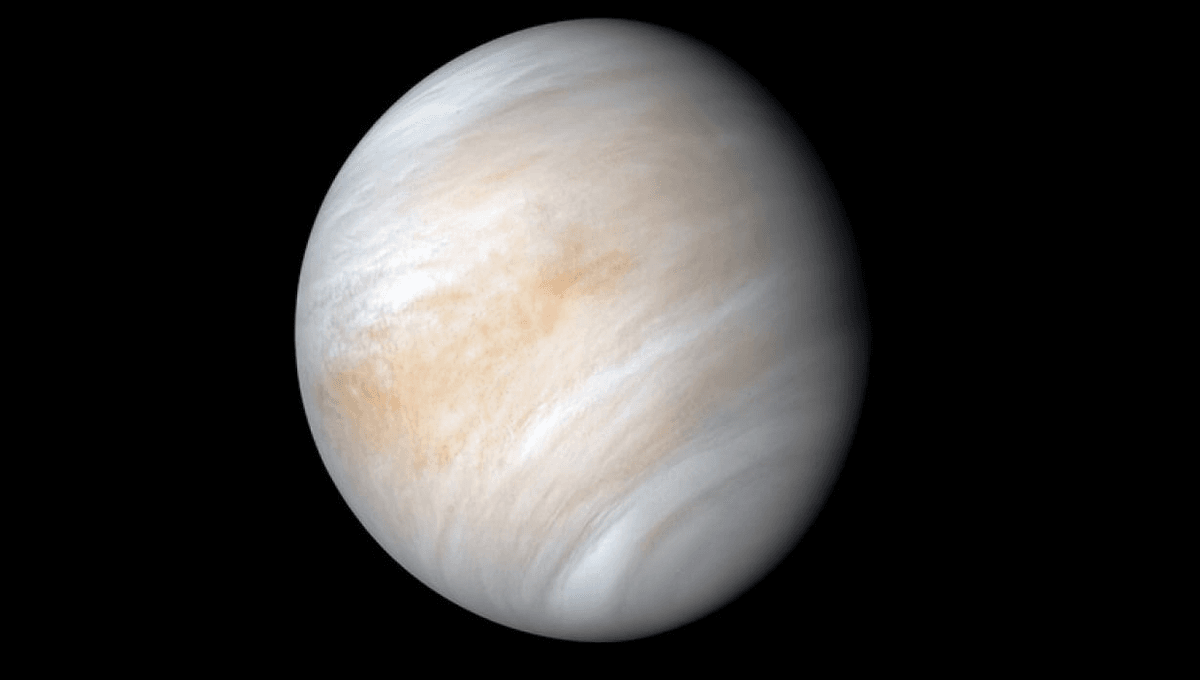
From the largest planets to comets, there are a variety of worlds in the Solar System that experience aurorae. On Earth, the Northern and Southern Lights are caused by electrically charged particles from the solar wind. They get carried along our planet’s magnetic field to higher latitudes before slamming into the atmosphere. That collision makes the different gases glow in different colors.
Venus and Mars also have aurorae, but they lack magnetic fields. What happens there is very different from what happens on Earth, but as a presentation from the American Geophysical Union Meeting suggests, the aurorae of Venus open up an important way to understand how an atmosphere responds to the powerful impact of space weather.
Potentially, the first report of aurorae on Venus comes from the 1600s. It became known as Ashen Light although the first detailed record might have been refraction in the telescope itself. Light on the night side was seen once again in the 1960s but it is only in the last 30 years that visible aurorae were detected again.
What’s incredible is the presence of green aurorae just like on Earth. Those are caused by solar particles slamming into the oxygen molecules on Earth, and something similar is happening on Venus. However, so far, there have not been any reports of red aurorae, which can also be caused by oxygen.
The brightest green aurorae on Venus were connected to coronal mass ejections – the explosive releases of plasma from the Sun – but the faintest of them can happen even from the regular solar wind flow, as Parker Solar Probe has shown.
That is not the only aurora seen on Venus. For a long time, planetary scientists have measured ultraviolet aurorae. These are similar to the ultraviolet aurorae on Mars that have been discovered by the Emirates Hope Probe. Mars and Venus are very different planets: Mars is smaller with a thin atmosphere, while Venus is almost as big as Earth with a much thicker atmosphere. Data from Mars has been crucial to understanding the effect that solar wind – energetic particles from the Sun – and coronal mass ejections have on the Martian atmosphere.
Further studies might reveal the important connection between space weather and Venus. There are multiple missions returning to the planet in the next several years, including NASA’s DAVINCI+ and VERITAS, as well as the European Space Agency’s EnVision.
Source Link: Rain Of Solar Particles Causes Visible Aurorae On Venus – Even Without A Magnetic Field